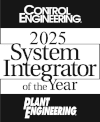
Author Contributor: Jonathan Sajdera, Engineer III
Overview
Upgrading legacy automation systems is a significant decision for manufacturers, requiring a thoughtful evaluation of cost, downtime, and future scalability. As systems age, the risks associated with outdated hardware and communication protocols grow—making modernization a necessary step to maintain operational efficiency.
This article outlines the key factors to consider when evaluating automation upgrades, drawing from real-life examples based on recent E Tech Group projects and proposals. In this particular case, we evaluated an obsolete Allen-Bradley SLC system for a transmission parts manufacturer, aiming to address both immediate operational challenges and long-term scalability.
Why Upgrade?
Aging automation systems present several challenges:
- Obsolete Hardware – Limited availability of spare parts increases the risk of extended downtime.
- Outdated Protocols – Legacy communication protocols may not integrate with modern systems.
- Support Limitations – Older systems often lack vendor support, making maintenance difficult.
When the transmission parts manufacturer faced these challenges as their SLC system approached end-of-life, they needed a solution that addressed both immediate functionality and long-term operational goals.
Key Considerations for Automation Upgrades
- Cost-Effectiveness
Managing upgrade costs while maintaining or improving system functionality is a priority. In this case, we used Rockwell Automation’s CompactLogix system paired with a conversion kit. This approach allowed us to reuse existing wiring and mounting hardware—significantly reducing labor and material costs.- Pro Tip: Use tools like Integrated Architecture Builder to evaluate multiple hardware configurations and identify the most cost-effective solution while maintaining compatibility with existing infrastructure.
- Minimizing Downtime
For manufacturers operating under tight production schedules, minimizing disruption is essential. By using a conversion kit, we avoided the need for extensive rewiring and accelerated installation—reducing the overall downtime required to complete the upgrade.- Pro Tip: Evaluate upgrade options that preserve existing wiring and infrastructure to shorten installation time and reduce the risk of errors during commissioning.
- Modernizing Communication Protocols
Many legacy systems rely on outdated protocols (e.g., DF1, DH485, DH+) that limit connectivity and data access. Migrating to Ethernet-based communication provides better integration with modern control systems and enables advanced diagnostics and remote monitoring.- Pro Tip: Prioritize upgrades that transition to open, scalable communication standards to support future system expansion and data collection.
- Planning for Future Expansion and Safety
Even if immediate needs don’t require advanced safety or additional capacity, designing an upgrade with future growth in mind can prevent costly rework later. In this project, we included a proposal for GuardLogix capabilities—allowing the system to accommodate future safety requirements without major modifications.- Pro Tip: Choose platforms that offer modular expansion and built-in support for future compliance needs, such as safety standards and IIoT capabilities.
- Lifecycle Management
While the programmable logic controller (PLC) is a primary focus, other system components also have a finite lifespan. We evaluated and advised the client on additional upgrades for critical components like power supplies and Ethernet switches, ensuring a comprehensive modernization strategy.- Pro Tip: When planning an automation upgrade, conduct a full-system lifecycle assessment to identify aging components that may require future replacement.
Case Study: Upgrading an Allen-Bradley SLC System
In collaboration with WESCO, E Tech Group proposed a tailored solution for a transmission parts manufacturer. Key outcomes included:
- Reduced Downtime – Using a conversion kit minimized physical modifications, accelerating the upgrade process.
- Cost Efficiency – We optimized the CompactLogix configuration to balance affordability with future readiness.
- Improved Communication – Migrating to Ethernet increased system compatibility and enabled remote diagnostics.
- Future-Proof Design – Including in the proposal the ability to add on GuardLogix capabilities allows for easier integration of future safety measures.
This approach not only modernized the control system but also positioned the client for future operational needs.
Taking a Holistic Approach to Automation Upgrades
Successful automation upgrades require more than replacing outdated hardware. A comprehensive strategy considers long-term operational goals, system flexibility, and lifecycle management.
When evaluating an upgrade, ask these key questions:
- Cost: What is the most cost-effective solution without sacrificing performance?
- Downtime: How can installation time and production disruption be minimized?
- Compatibility: Are there legacy protocols that need to be updated for modern communication?
- Future Needs: Is the system scalable for future safety, capacity, and technology advancements?
- Lifecycle: What other components are nearing end-of-life and should be included in the upgrade?
Conclusion
Automation upgrades are a crucial investment in maintaining operational efficiency and preparing for future demands. By carefully considering cost, downtime, communication protocols, and long-term system health, manufacturers can ensure a smooth transition to modern technology.
As a Main Automation Partner, E Tech Group takes a holistic approach to modernization—offering more than just hardware replacements. We work closely with our clients to understand their unique operational challenges and deliver tailored solutions that not only meet today’s needs but also support future growth and innovation.
Let Us Guide You Through Your Next Upgrade
Reach out to us here and someone will respond within 24 hours.
"*" indicates required fields
